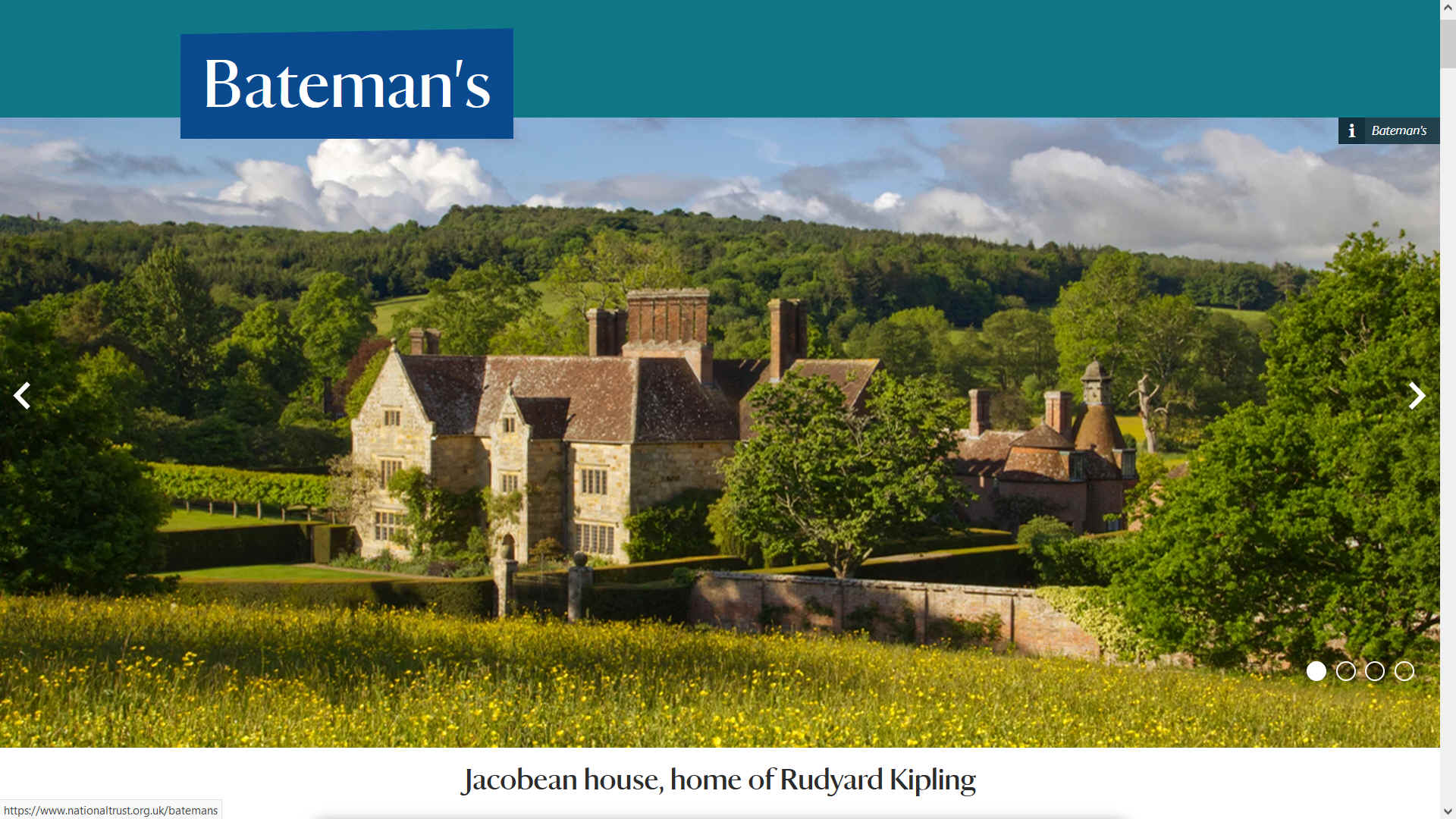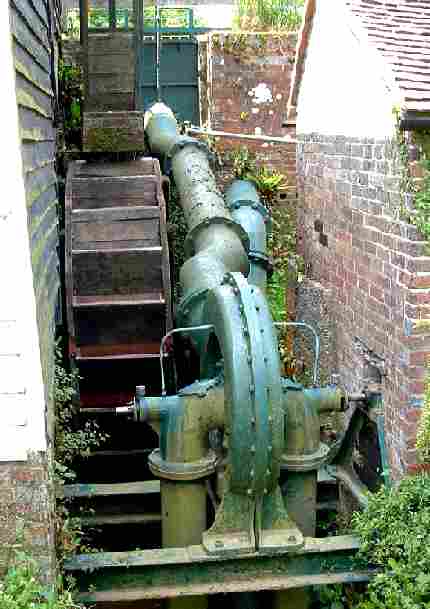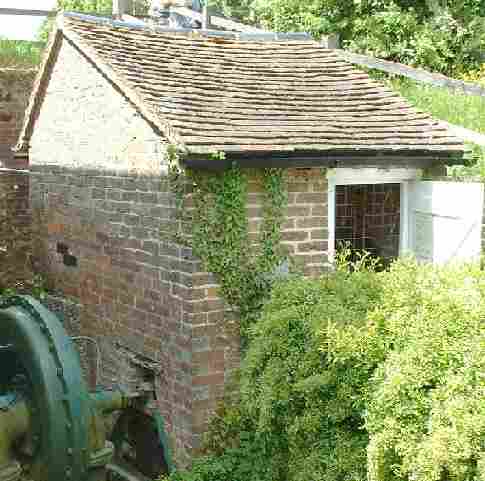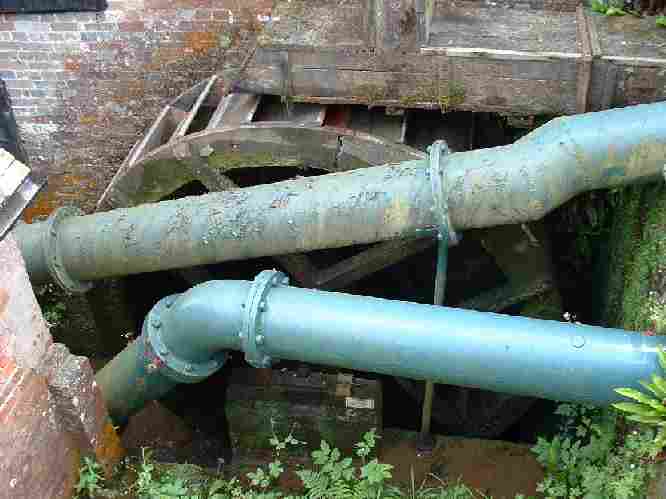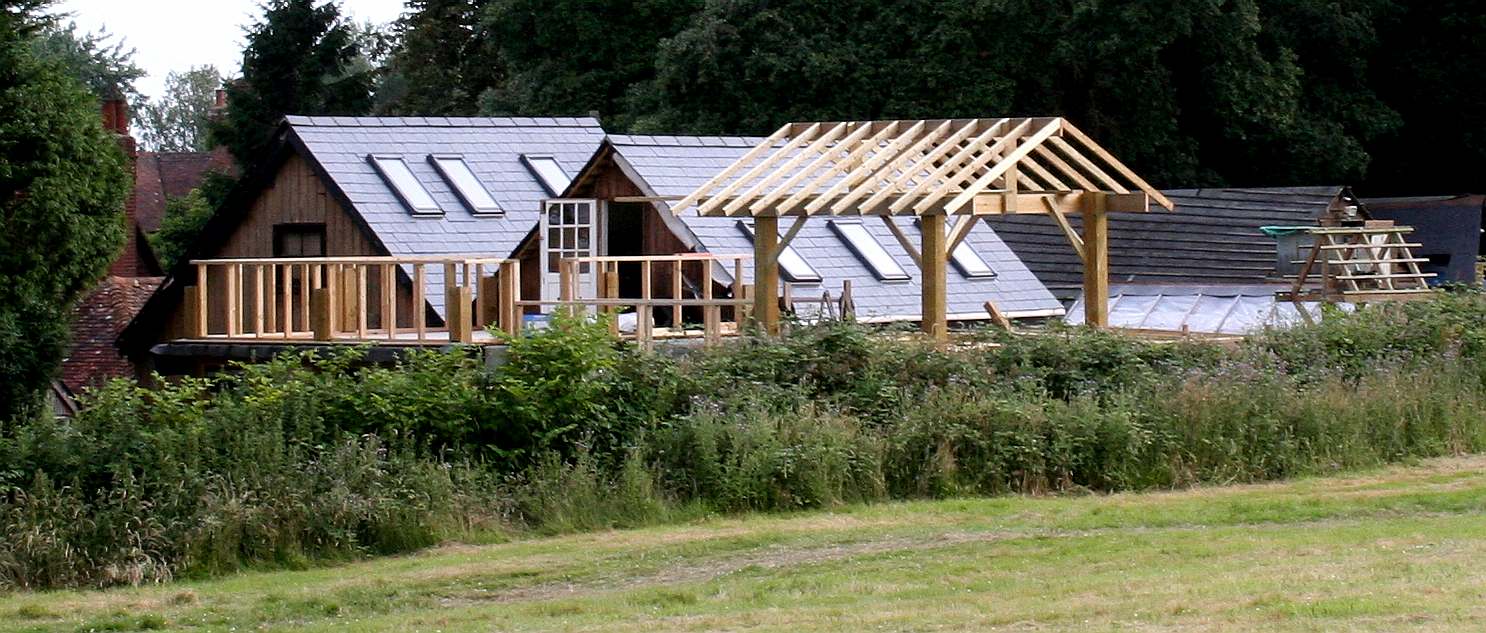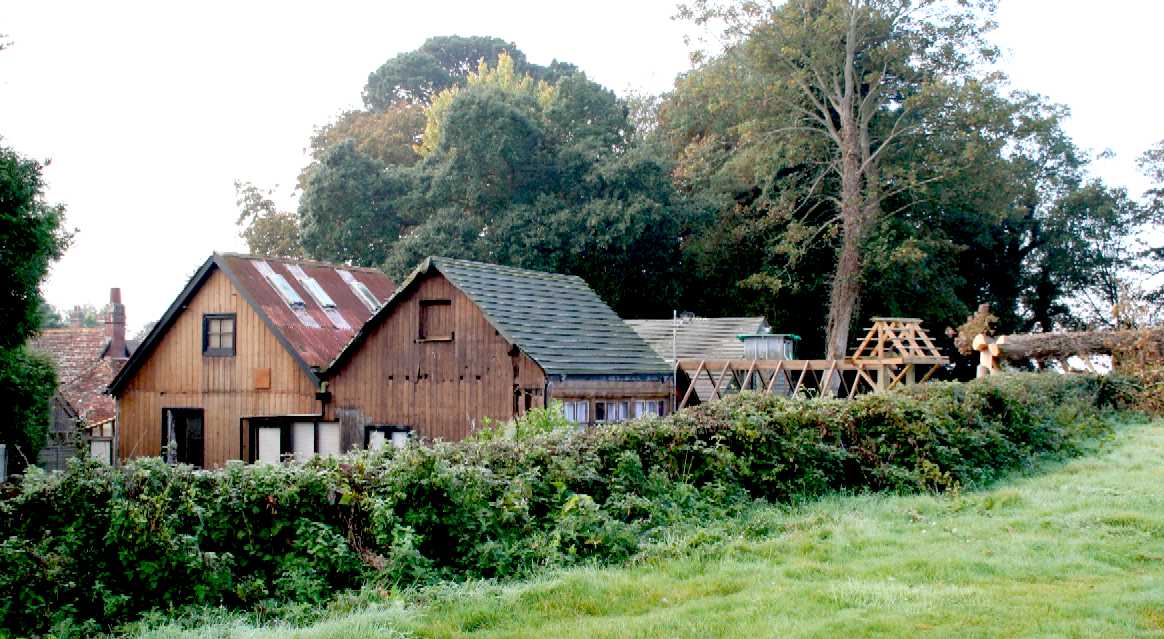|
BATEMAN'S
Please use our A-Z INDEX to navigate this site or return HOME
|
|
The house is built of sandstone to a double-pile plan, and is of two storeys with gables above. The eastern, entrance, front may once have been symmetrical with a northern wing matching the southern one. Historic England's listing states that the wing was constructed but later torn down, while Pevsner suggests that it may never have been built. The windows are mullioned and the roof has an "impressive row of six diamond-shaped red brick chimney stacks".
Rudyard Kipling's home at Burwash, powered 10 light bulbs for lighting of his private home - all powered by a dynamo driven by a watermill adaptation.
Bateman's is a 17th-century house located in Burwash, East Sussex, England. It was the home of Rudyard Kipling from 1902 until his death in 1936. The house was built in 1634. Kipling's widow Caroline bequeathed the house to the National Trust on her death in 1939. The house is a Grade I listed building.
Itís easy to see why Kipling fell in love with
Batemanís. This is a quietly stunning corner of Sussex. The surrounding silence and undulating views are reminiscent of sleepy days gone by and the house and its grounds have an
air of melancholy. The team at Batemanís are keen to impress on you that it feels as if the family are just in the other room. And it does. But not just because it is laid out exactly as it was when the family lived here. Thereís just something about it that hangs heavy with all the romance, elegance, uncertainty, and sorrow of the Edwardian era and
WWI.
ABOUT KIPLING
A water turbine was installed side by side with a water wheel, the installation being far less demanding than the wooden wheel, but gravity providing the potential difference as height. The energy being released through a turbine, thence to a shaft that went through the wall of the adjacent shed. The shaft turning a pulley and belt system, that finally turned the DC dynamo, that powered up to ten light bulbs inside Rudyard Kipling's house.
WATER MILL
The Batemanís estate consists of 300 acres of beautiful High Weald Countryside. Set within the High Weald Area of Outstanding Natural Beauty, this landscape is classically medieval; full of small fields, hedgerows, old trees, abandoned iron ore pits, hidden ponds and magical deserted trackways. The River Dudwell runs through the valley and there are seemingly endless magnificent views, making the Batemanís estate the perfect place for a daily walk.
WHAT HAS BATEMAN'S IN COMMON WITH THE GENERATING STATION AT HERSTMONCEUX - They are both on the same monument protection programme with Historic England.
When Howard Carter discovered Tutankhamun's tomb in 1922, the dig was not much to look at. A lot of sand and a small entrance, amongst a desert of dunes. But once inside, the small chamber, the Egyptologist realised that the monument was intact. Hence was a treasure trove.
The old Generating Works in Lime Park is not of outstanding design or construction, seen above in 2013 and 2016, re-roofed. The astonishing fact is that it remains extant, where others have been demolished by property developers, or rotted away. Indeed, many former residents in Lime Park, and two recent newcomers, have not grasped that this is all that is left as evidence of our transition from coal, to electricity. The only example surviving anywhere on the planet of its kind, including load levelling via a giant battery store proportional to the enterprise, comprising roughly half of the building, with substantial shelves where weighty glass lead-acid batteries were stored, to power the whole village of Herstmonceux, and Lime Part estate, overnight.
The buildings have no reasonable or beneficial use, the local authority appear to be doing all they can to prevent conservation. Placing manifold obstacles in the way, where they should be helping those interested in restoring the historic asset, to achieve that ideal - as part of their duty to protect local heritage.
Rudyard Kipling's Batemans, is included (with Herstmonceux Generating Station) on Step 4 of a Monument Protection Programme (MPP) undertaken on behalf of English Heritage (now Historic England) - for East Sussex.
You can visit the record at TheKeep, in person or via their online search service. Or see HER, the Historic Environment Record of East Sussex County Council.
LINKS & REFERENCE
https://www.
FREEDOM OF THOUGHT AND SPEECH - This website is protected by Articles 9 and 10 of the European Convention of Human Rights and Fundamental Freedoms, and Articles 18 and 19 of the Universal Declaration of Human Rights. Herstmonceux Walkers Association avers that the right to impart information is a right, no matter that the method of communication is unpalatable to the State.
|
|
|
Please use our A-Z INDEX to navigate this site or return HOME
|
